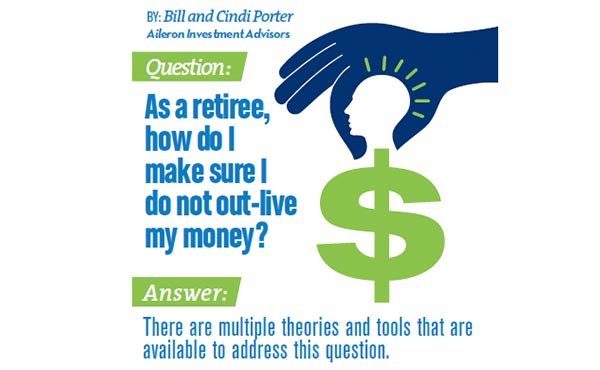One strategy limits an individual to spending just the portfolio earnings every year and never touching the principal. However this method has some obvious planning problems. If the portfolio is invested in securities (stocks and bonds, etc.) the earnings (dividends and interest) are somewhat unpredictable, not guaranteed, and the portfolio itself is also subject to the ups and downs of the market.
There are times when banks may provide retirees with a steady stream of predictable income by offering long-term certificates of deposit. It has been a few years since that has been a viable option because interest rates are currently very low. It appears that it might be several more years before bank interest rates rise to their historical average (5.43% for the past 25 years).
Another option is to transfer part of your risk of running out of money to an insurance company by investing in a guaranteed life-time income annuity. You would receive a monthly income for as long as you live – any remaining balance would be paid to your beneficiary.
The potential drawback to this option is that the funds deposited with the insurance company have limited liquidity. It would be imperative that you keep cash reserves in other parts of your portfolio. Additionally, there are three distinct types of annuities (fixed, index, and variable) which offer significantly different options and considerations. Your personal circumstances would determine which type of annuity (if any) would be most advantageous for you.
Creating an income plan for retirement will typically involve utilizing multiple strategies. Your trusted advisor can assist you with one of life’s most important financial plans – a sustainable life-time retirement income. ■

















